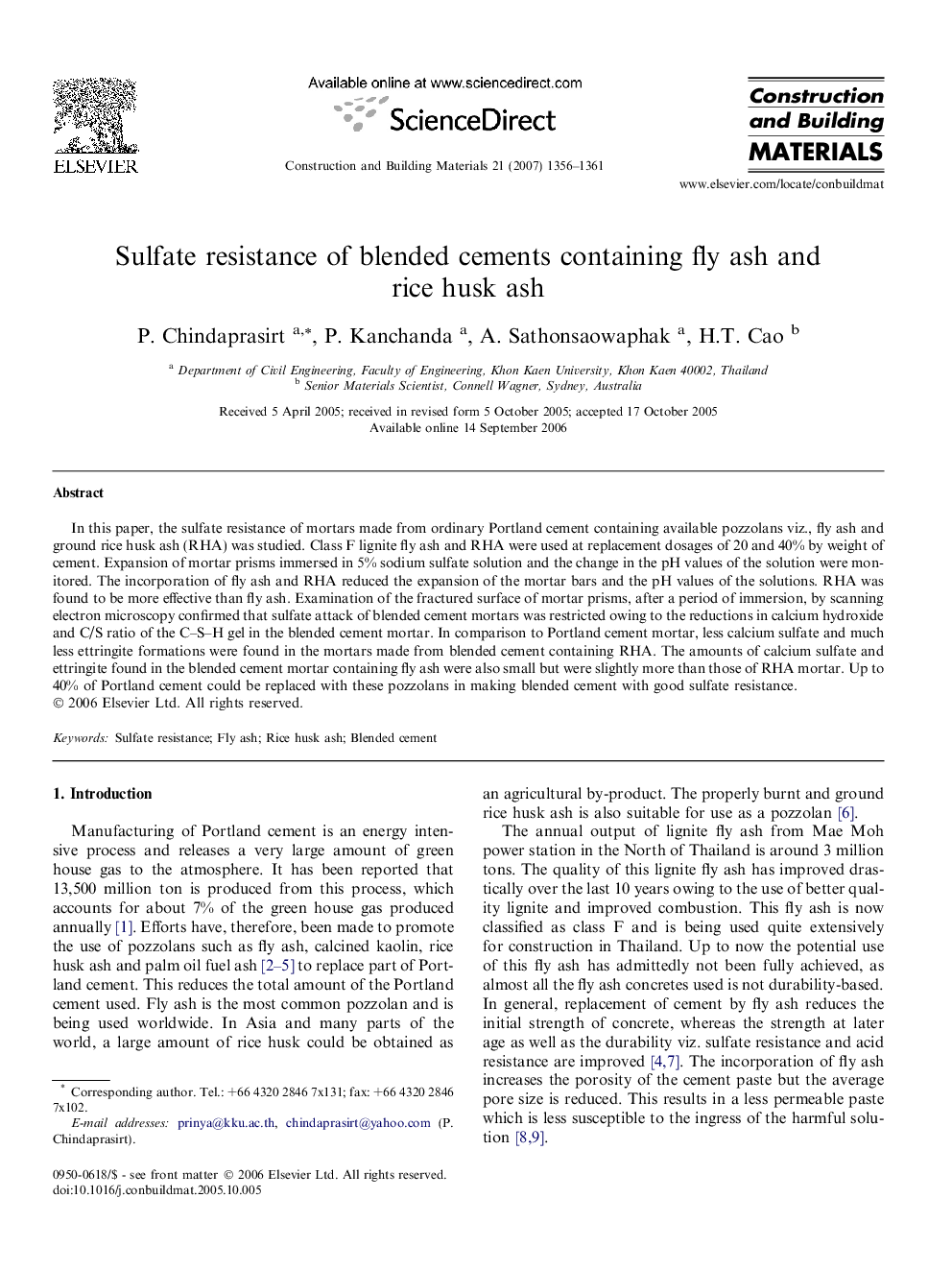| Article ID | Journal | Published Year | Pages | File Type |
|---|---|---|---|---|
| 261073 | Construction and Building Materials | 2007 | 6 Pages |
In this paper, the sulfate resistance of mortars made from ordinary Portland cement containing available pozzolans viz., fly ash and ground rice husk ash (RHA) was studied. Class F lignite fly ash and RHA were used at replacement dosages of 20 and 40% by weight of cement. Expansion of mortar prisms immersed in 5% sodium sulfate solution and the change in the pH values of the solution were monitored. The incorporation of fly ash and RHA reduced the expansion of the mortar bars and the pH values of the solutions. RHA was found to be more effective than fly ash. Examination of the fractured surface of mortar prisms, after a period of immersion, by scanning electron microscopy confirmed that sulfate attack of blended cement mortars was restricted owing to the reductions in calcium hydroxide and C/S ratio of the C–S–H gel in the blended cement mortar. In comparison to Portland cement mortar, less calcium sulfate and much less ettringite formations were found in the mortars made from blended cement containing RHA. The amounts of calcium sulfate and ettringite found in the blended cement mortar containing fly ash were also small but were slightly more than those of RHA mortar. Up to 40% of Portland cement could be replaced with these pozzolans in making blended cement with good sulfate resistance.
